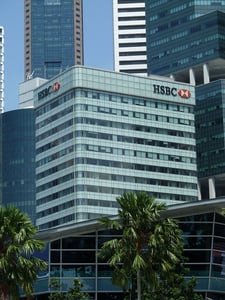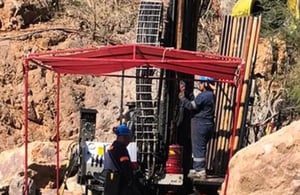Advanced Oncotherapy Plc (LON:AVO) Senior Vice-President in charge of Client Services, Simon Lee, discusses the installation and services related to LIGHT, the company’s proton therapy system.
Q: Simon, what is your role within AVO?
A: Together with my team, we are focused on four main areas: building of the proton therapy facility with the clinical operator, physical installation and commissioning of LIGHT, customer servicing to maintain operational uptime and customer support.
Q: Can you give us some examples as to what these responsibilities entail?
A: The construction and installation process is a very important part of our day-to-day job which needs to be synchronised very closely with AVO’s technical team. Apart from all supplier, construction, transportation and logistical matters, consideration must also be given to the engineers and clinical specialists who will install and commission the LIGHT system to make it ready to treat patients.
Service agreements are there to ensure we meet our commitment in providing the desired system uptime with the criteria of excellence which we set. This is achieved by putting contracts and protocols in place, having helpdesk personnel, engineers on site and having back-up equipment available, for example.
Customer support includes technical advice, system upgrades, dealing with queries, customer feedback, issue reporting and generally maximising the benefit to the client from their purchase.
Q: And which aspects of after-sales servicing are you involved in currently?
A: All of them. We are working very closely with our client, Circle Health, as well as the Howard de Walden Estates which bears the building cost for the proton therapy facility located at Harley Street, London. We are also reviewing potential options at a new-build hospital in Birmingham.
Q: What excites you the most in your job?
A: The opportunity to work on a breakthrough technology that addresses all the challenges that I have seen through my 30 years experience of installing medical and radiotherapy equipments!
One key risk for proton therapy manufacturers is an inability to match demand and supply, which is an issue we are seeing in the market currently. Ease of installation is a major factor in this regard. Transportation, installation and even relocation should be far more straightforward than is currently the case thanks to the LIGHT accelerator’s modular nature and the small size of those modules. The accelerator can also be located and installed in novel ways, such as doubling the beam back on itself, to reduce foot-print. A more straightforward installation process also requires fewer personnel to carry it out, improving the economics for our customers.
The LIGHT system will not require the construction of bespoke buildings to house it. As a perfect example, look at our installation on Harley Street, a site where no other proton therapy system could be installed. The significance of this point should not be underestimated; if a LIGHT system can be installed here, think of the number of existing hospitals and clinics globally where it can also be used.
Ease of maintenance is equally important. LIGHT has been designed to be both reliable and serviceable. As a linear proton accelerator with electronic beam control, induced radiation in the room where it is housed will be far lower than for cyclotrons or synchrotrons. This means that engineers won’t experience the same potential delays during servicing or maintenance while waiting for secondary radiation to decay, so the system is designed to maximise operational uptime. It also has fewer moving parts, making it less prone to mechanical failure.
Q: And the Harley Street project will be a showcase to support these unique features of AVO’s offering?
A: Although each project I have worked on is different, the Harley Street project is really remarkable. It is due to take considerably less time and will be achieved at a fraction of the cost, in spite of the constraints of working within central London, in a residential area and in a Grade I listed building. This is because the LIGHT system is based on a radically different technology.
Q: How does your background help Advanced Oncotherapy Plc to achieve these goals?
A: I’m a mechanical engineer by training and worked on a mixture of heavy- and light-engineering projects, before joining Philips in 1996 as a Senior Engineer and Project Leader in their radiotherapy imaging unit. Working very closely with their R&D teams, my role was to help bring new products from concept into production.
Even though Philips’ radiotherapy imaging unit was sold to Elekta, a market leader in X-ray radiotherapy, just a year later, I was with the same team until 2012; roughly half that time was devoted to working with R&D and the other half as Commercial Manager for the EMEA region (Europe, including eastern Europe, Middle East and Africa). My role as Commercial Manager was very similar to what I do now – managing a build project, installations, service agreements and customer support. I was the first point of contact for Elekta’s clients.
I subsequently joined Varian Proton Therapy as Customer Manager UK, although my time was split between the UK and Russia. While in Russia, I was managing a €200 million project in St Petersburg at the Petersburg Nuclear Physics Institute. That project is due to have first patient treated in 2018, with construction having commenced in the summer of 2013.
My career to date has covered all aspects of proton and X-ray based radiotherapy after-sales management and support. This experience will be vital, I believe, in providing a service to Advanced Oncotherapy’s clients that matches the technical excellence of the LIGHT system itself. In this way, we will capitalise fully on LIGHT’s potential.





































